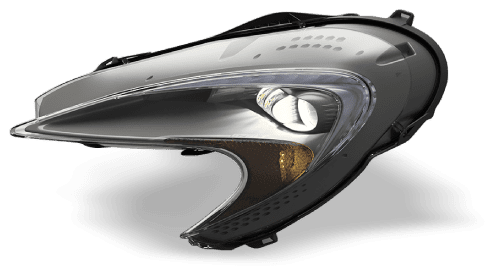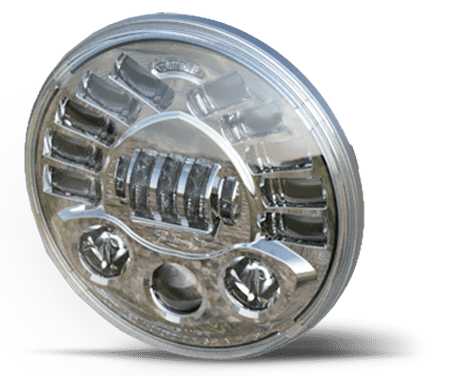
How to Fix Hyper Flashing with LED Lights
Hyper flashing is a vehicle's turn signal circuit flagging a burned-out bulb.
What causes hyper flashing?
Hyper flashing is nothing more than a turn signal that blinks faster than normal. It’s a deliberate function of the vehicle’s turn signal circuit that alerts the driver that there is a bulb failure.
Standard bulbs (not LEDs) use electrical resistance to create light. When you turn a bulb on, the filament will generate that resistance, in turn creating heat and light. If a bulb is burned-out, your vehicle can tell that the resistance is low and will begin to hyper flash.
Any time you replace standard-issue tail lights, marker lights or turn signals with LED upgrades, there is a risk for hyper flashing. The use of a hyper flash resistor ensures the LED turn signal lights properly simulate the resistance of the standard bulbs being replaced.

How do LEDs work?
LEDs don’t use resistance to create light; therefore, creating little or no resistance. The lower resistance level is detected by the vehicle as a burned-out bulb, which would cause the LED light to hyper flash. In order to avoid hyper flashing, LED upgrades are designed with a resistor that simulates a standard bulb and provides your vehicle with the resistance it needs to work properly.
Troubleshoot Hyper flashing
If you experience hyper flashing, there may be several things going on:
1.) Aftermarket parts are affecting the turn signal circuit
This will happen when you have additional LED upgrades relying on the resistance of the bulb to function properly. This is commonly found with LED Front turn signals that don’t have a large enough resistor. While your J.W. Speaker LED tail lights are supplied with an external resistor it needs to work properly, it is only designed to work for the tail lights. You will need a resistor large enough to cover any front LED turn signal upgrades.
This is true for other modifications to your vehicle relying on resistance. Although they don’t seem related to the tail lights, they can cause hyper flashing if the overall resistance is too low.
2.) Overly "sensitive" vehicles
While this condition is rare, it can happen with a variety of vehicles, especially some Jeeps. We first recommend going back to stock to see if there is hyper flashing. If your stock lights work, but you continue to have an issue with your LED lights exhibiting hyper flashing, we recommend working with your authorized dealer to troubleshoot the problem. As such, it may be necessary to reinstall your stock tail light if this condition cannot be resolved.
Hyper flashing and your J.W. Speaker tail lights
J.W. Speaker tail lights are designed with an external resistor to provide adequate resistance simulating a bulb-based system. However, there is variation in vehicle systems depending on the year and model that affects resistor requirements.
Some Jeep JKs are known to be overly sensitive to the resistance required. To this end, J.W. Speaker has sought to accommodate this sensitivity, providing adjustments needed to resolve hyper flashing issues for Jeep JKs.
Hyper flashing and your J.W. Speaker Warranty
Hyper flashing is a potential issue with all LED tail lights and can be the result of many factors beyond our control. However, in spite of implementing preventive measures to address this condition proactively, it is not possible to account for every cause of hyper flashing. Therefore, hyper flashing is not a warrant-able condition. If you are unable to resolve this problem satisfactorily, we advise you to return the lights to your dealer.
Learn more about J.W. Speaker Backup Lights, Stop & Tail Lights.
About J.W. Speaker
J.W. Speaker is focused on developing innovative, high-performance vehicular lighting solutions for OEM and aftermarket customers around the world. Specialized in LED and other emerging lighting technologies, J.W. Speaker is proud to design, manufacture and assemble products in Germantown, Wisc. For more information, contact J.W. Speaker at (800) 558-7288 or news@jwspeaker.com.


